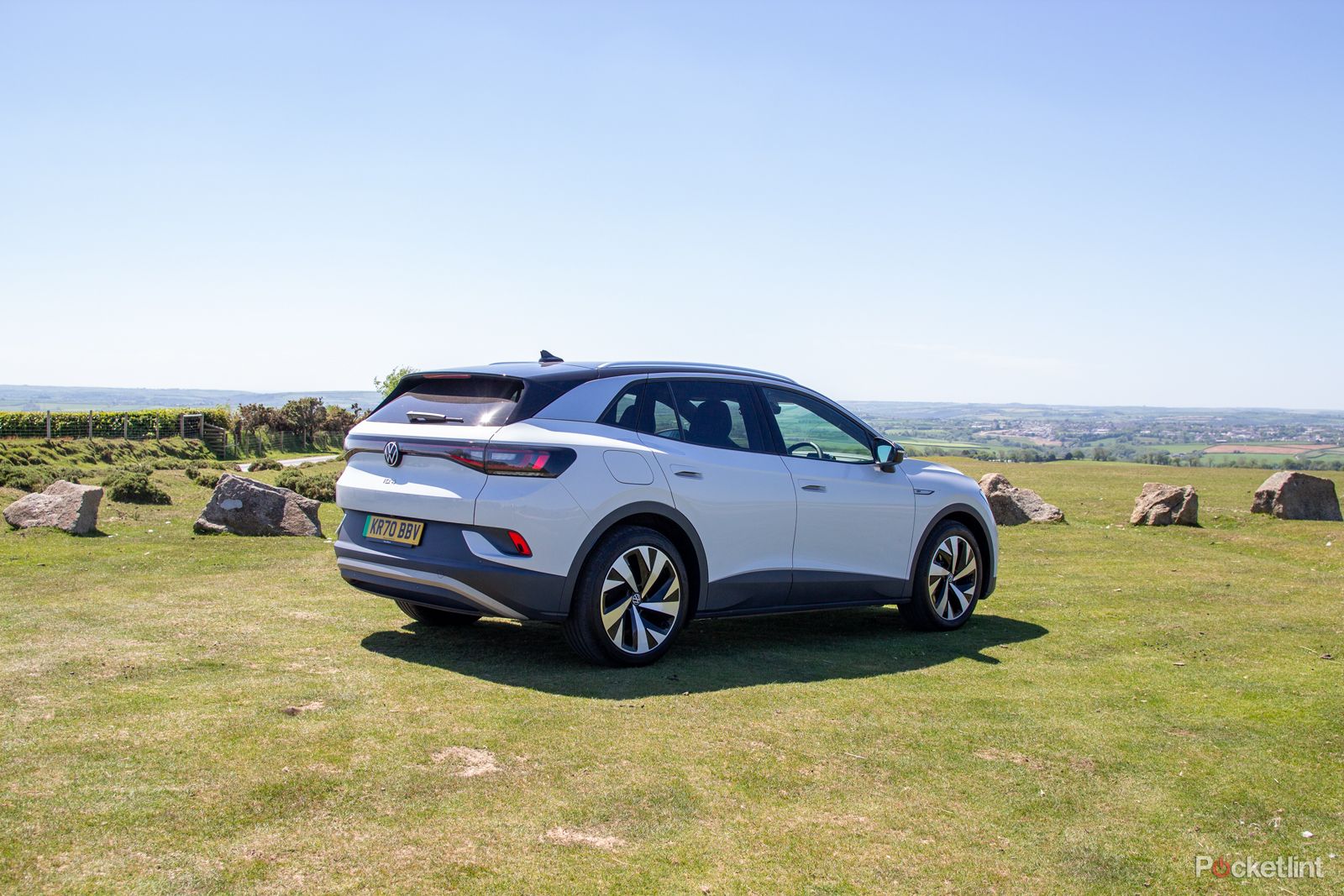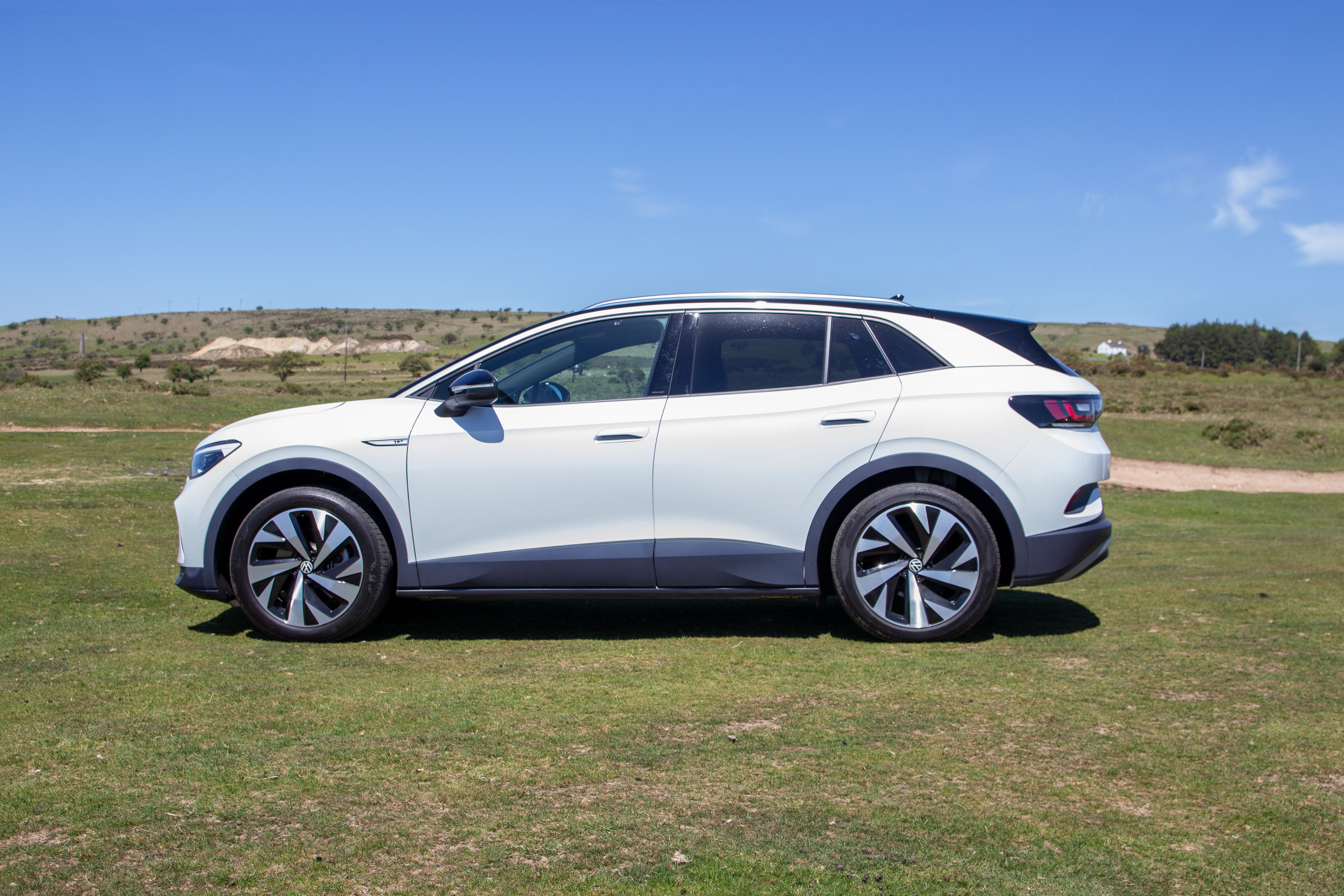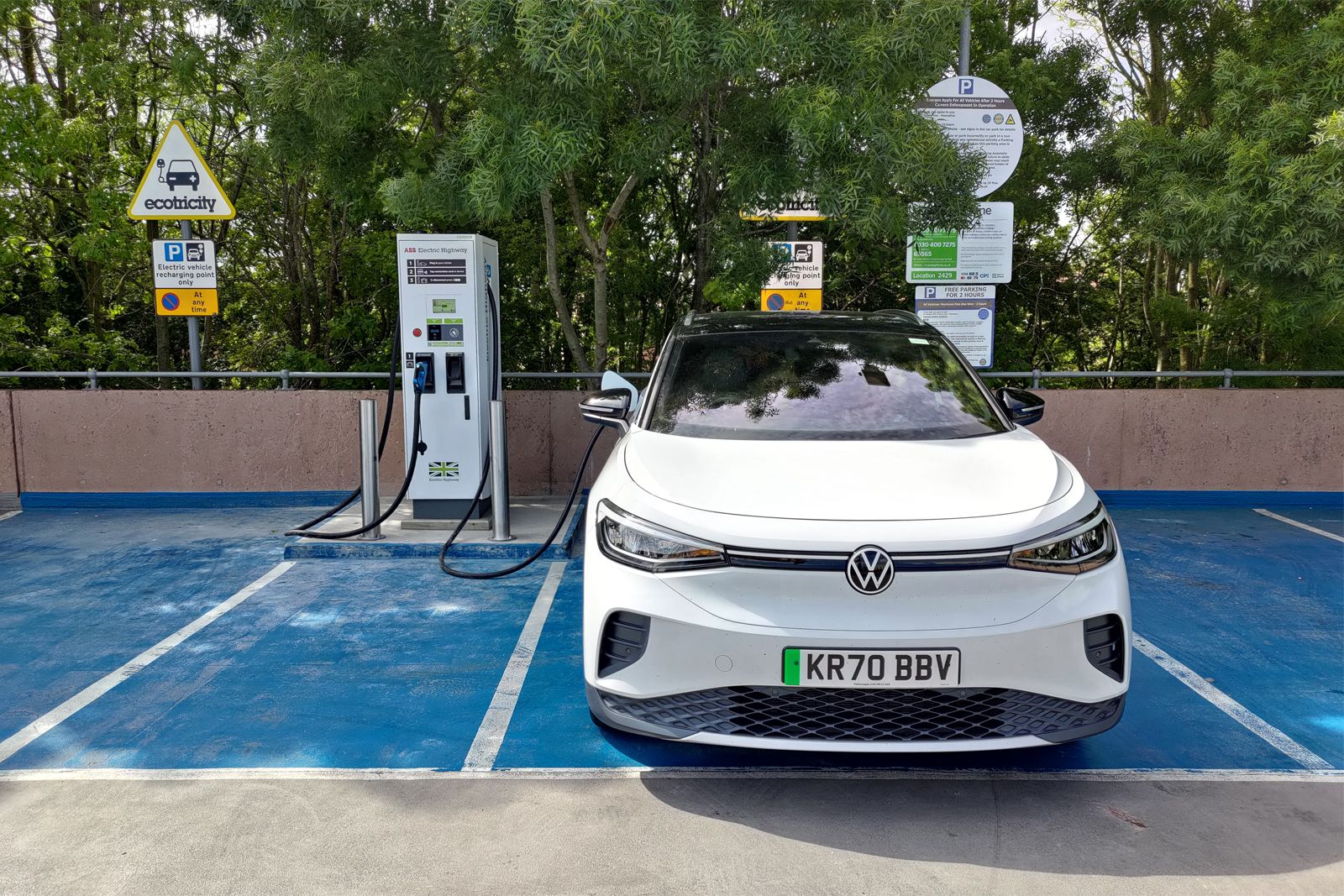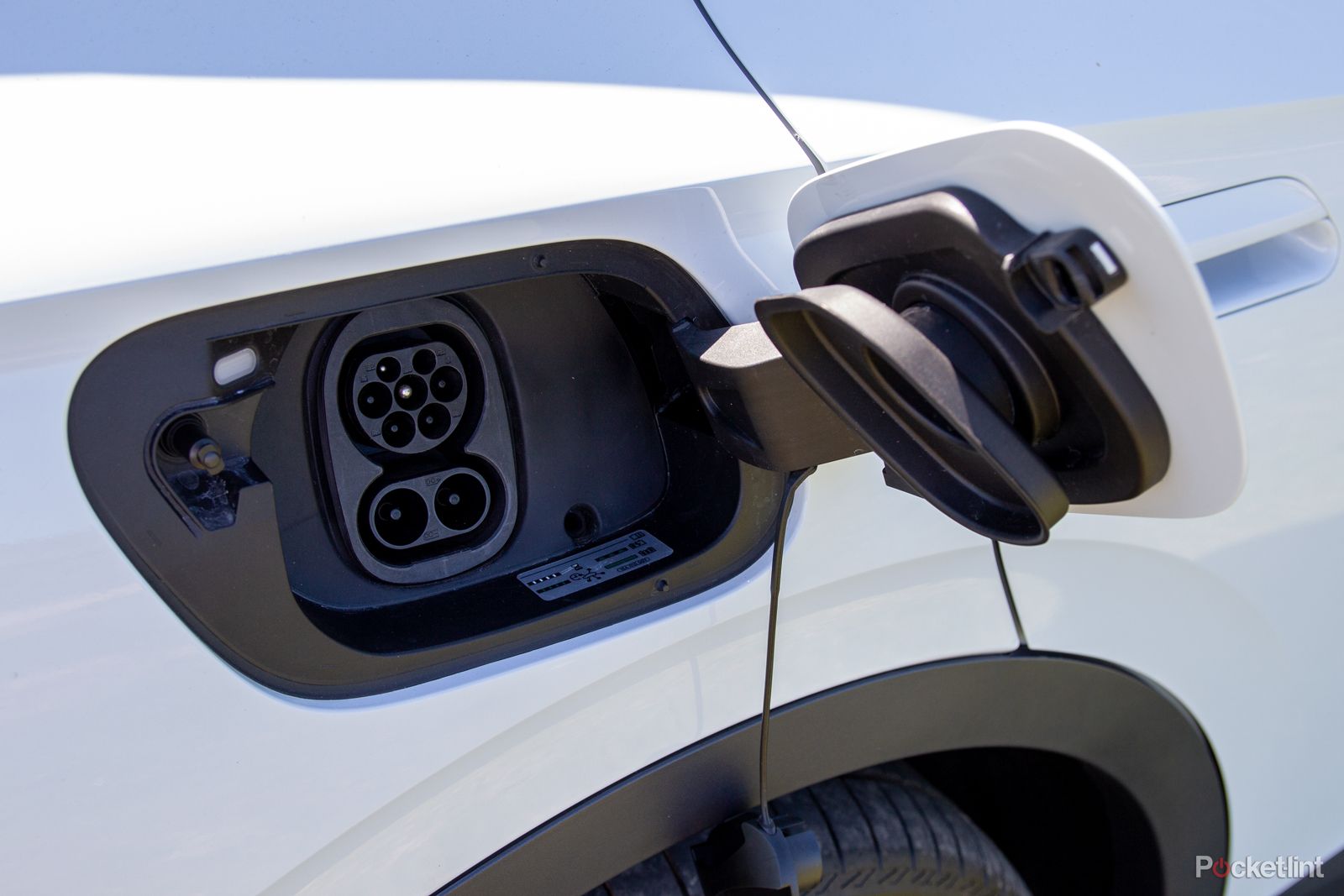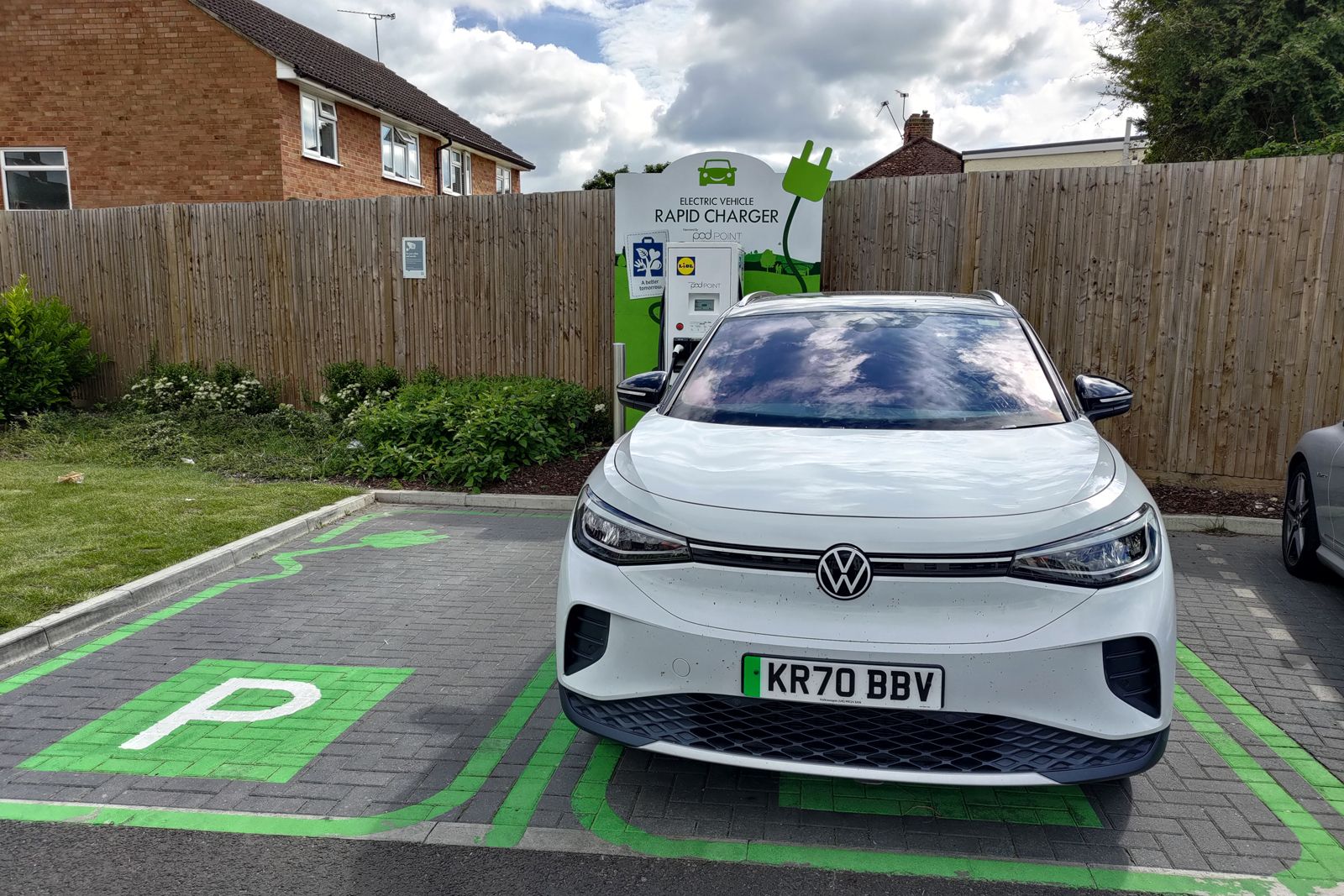Two years ago, we packed up the Audi e-tron - at the time one of the first big electric cars on the UK's roads - and drove down to Cornwall to get an insight into the sort of challenges that longer distances would present to EV drivers.
Packing a family - and dog - this time into the VW ID.4, we set off to repeat the drive we'd undertaken two years before. Same route, same destination, and a very different experience.
Let's talk about range
The big advantage that the VW ID.4 has over the Audi e-tron that we previously used is that its 77kWh battery will deliver close to 300 miles of range. The Audi e-tron struggled to offer much more than 200 miles from its larger battery.
So why the difference in range?
The VW ID.4 is smaller, lighter, and it's been designed as an electric car first - whereas Audi were very specific in designing the Audi e-tron as an Audi first.
That sees the e-tron offering more power, a more dynamic drive, Quattro all-wheel drive and a higher spec interior - much of which adds weight and reduces the potential efficiency. The e-tron is a glorious car to drive, but it can't compete with the ID.4 when it comes to efficiency.
Of course, this is a world apart from filling a tank with diesel and knowing that you've got 600 miles in the tank, and that's still a concern for many people.
Range anxiety doesn't really exist: it's charging anxiety
That concern is abated by a decent charging network. Setting out from Surrey, with a 244 mile journey, the drive to Cornwall was within the range of the ID.4. But, knowing that where we were staying in Cornwall had no charging provision we'd planned to stop on the way for at least one charge.
Slipping into adaptive cruise control on long clear motorways, the ID.4 didn't dump its charge like some EVs do, it actually returned a respectable average, so we decided to stop after about 150 miles and a couple of hours on the road, to top-up before the final leg.
That was a fortuitous stop, because there was a single 120kW Electric Highway charger at the services we stopped at. This charger is listed on maps - but Google lists it as a 50kW Type 2, while the usually reliable Zap-Map didn't have the correct details either.
That highlights two things: firstly, that mapping information on these chargers is currently inadequate - and getting access to that information in the car isn't great. VW does show charging locations on the map - as well as listing the charging speed - but if you're driving with something like Waze, you'll have no information at all.
Waze, a mapping service that prides itself on up-to-date information, will let you select that you're driving an electric car, but won't give you the option of selecting electric as the fuel type, which is madness.
Searching for charging stations in the VW ID.4 isn't difficult: you head into search in the map and there's an icon for electric charging stations, but it's not a complete list and this remains one of the problems when living with an electric car.
We'd much rather a button to punch in the UI to go straight to chargers, rather than having to dig into search to find them.
However, the VW ID.4 did support that 120kW charger we found, so it's a great way to get yourself charged and back on the road with minimal delay.
Let's talk about cost
The argument for going electric often get mixed up with cost: the cars are more expensive, but the cost of powering them is often much less than liquid fuels. That changes slightly depend on whether you're charging at home, in which case you're using your domestic tariff (which is probably about 18p/kWh) or a public charger - which can be more expensive.
We departed with a full charge and for those interested these are the recharges we made during the week away:
- £11.26 - 31kWh (35p/kWh)
- £10.85 - 36kWh (30p/kWh)
- £4.23 - 14kWh (30p/kWh)
- £8.70 - 29kWh (30p/kWh)
Apps still aren't helping the experience
Physically updating chargers is something that's slowly happening: there are more 50kW chargers appearing in useful locations, on fuel station forecourts, at supermarkets, in pub and restaurant car parks and they are genuinely useful. Grab a 50kW charge while you do the weekly shop and you'll be rewarded with a full charge when you get back to your car.
As we found a couple of years earlier, dealing with a fragmented network of chargers is a very real issue that remains. While Tesla owners might smugly report how good the Supercharger network is (and that's true), the same problem applies to all EV owners when you're far from a convenient charger on a familiar network - even Tesla drivers.
There are a wide number of charging services to deal with, but the bigger change recently has been the move from pushing membership first, to offering pay at charger. That Electric Highway pump we mentioned didn't need you to use the app, you just tapped your payment card.
We've seen similar moves from BP Pulse - formerly BP Chargemaster incorporating the old Polar Network - where tapping your card to pay for your charge is becoming more common.
But for many of these services, the app design is poor, often being slow to load - Geniepoint we're looking at you - while some, like Pod Point, will let you easily start a charge, but make it more puzzling how you actually finish the charge.
In some cases, we've driven away from a Pod Point charger at the end of the charge not knowing if it actually knows we've departed, with the only reassurance coming from the email receipt that arrives later.
What's changed over the past 2 years?
It's clear that things are moving the right direction. For those wanting to drive longer ranges there are more options for cars on the road, like the VW ID.4, the Skoda Enyaq iV, Tesla Model 3, Kia e-Niro or Hyundai Kona, all of which offer bigger batteries and sit in a mid-range of EV prices.
But it's the charging networks that will make the real difference. While more useful charging points have appeared, change on one of the UK's most important networks - Electric Highway - has been slow.
Electric Highway has been taken over by Gridserve, with the promise of rapid replacement of aging chargers and an expansion into Electric Hubs in those key motorway locations. That could see the position being very different as soon as next year - especially as, in our case, Cornwall Services is on the list for a major expansion and that could make Cornwall much more accessible for electric cars.
But there's still plenty to be done: access to decent information in cars is inadequate and third-party services like Google Maps and Waze should be doing more to put electric charging at the forefront of its offering so it's ready for the future. Electric cars are still in the minority on the roads, but 2030 is rapidly approaching and there's still work to be done.

